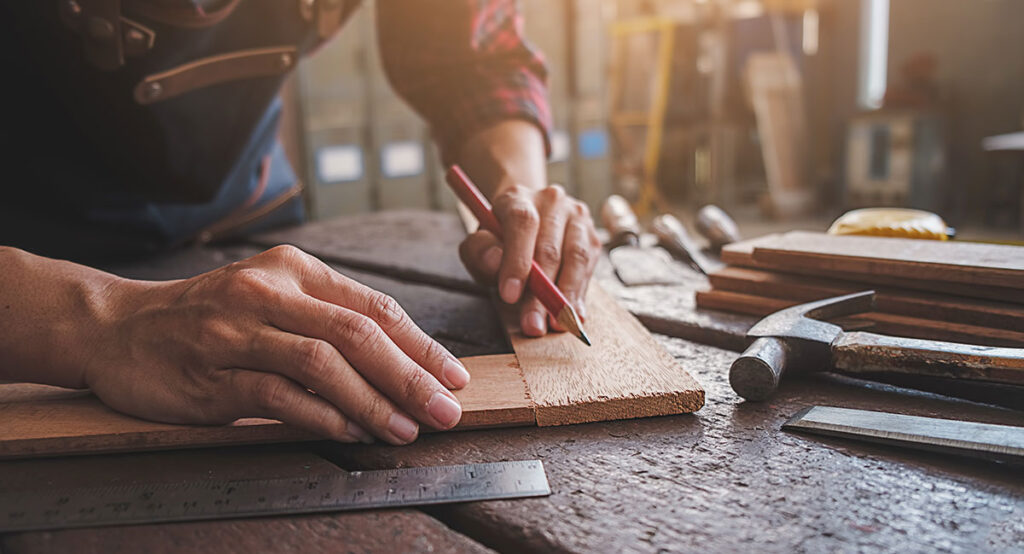The Satisfaction of Hands-On Creation
There’s something profoundly grounding about building something with your hands. In a world dominated by screens, spreadsheets, and endless virtual communication, the simple act of creating a physical object offers clarity, focus, and a deep sense of accomplishment. Over the years, I’ve found that whether it’s woodworking, home improvement, or even small mechanical projects, hands-on creation connects you to a part of yourself that often gets lost in the day-to-day rush of professional life.
Learning Through Doing
One of the most important lessons I’ve learned from building things is that learning doesn’t always come from books or lectures. Sometimes, it comes from trial and error, from feeling the weight of a tool in your hand, or figuring out why a joint doesn’t align properly. When you build something, you encounter real-world problems that demand practical solutions.
I remember working on a woodworking project at home, attempting to build a small bookshelf. I mismeasured a piece of wood and had to adapt my design on the fly. The process was frustrating, but it forced me to think creatively and pay attention to detail. By the time the project was finished, I didn’t just have a shelf—I had a renewed appreciation for patience, planning, and adaptability. Those are lessons I carry with me into both work and community projects.
The Connection Between Hands and Mind
Building with your hands isn’t just about producing a tangible object—it’s also about engaging your mind in a different way. When you’re designing, cutting, or assembling, you’re thinking spatially, logically, and sequentially all at once. There’s a rhythm to the work, and that rhythm can be meditative. For me, this kind of hands-on engagement offers a mental reset, a break from the constant abstract problem-solving that comes with running a business or consulting for organizations.
There’s also a sense of immediacy in manual work. You can see the results of your efforts almost instantly, whether it’s a perfectly aligned board, a cleanly cut joint, or a finished piece of furniture. That instant feedback is both satisfying and instructive—it teaches you to adjust, to refine, and to appreciate incremental progress.
Building Patience and Persistence
One of the greatest benefits of hands-on projects is how they teach patience. When you’re working with real materials, mistakes are unavoidable. Wood can split, screws can strip, and paint can smudge. But each challenge is an opportunity to slow down and focus, to figure out how to get back on track without giving up.
Persistence in building projects mirrors persistence in other areas of life. Whether it’s managing a team, improving a system, or supporting a community initiative, progress rarely comes in a straight line. Learning to adapt, recover from mistakes, and keep moving forward is a skill honed in the workshop just as much as in the boardroom.
The Joy of Tangible Results
In an increasingly intangible world, building with your hands reminds you of the value of physical results. There’s a certain pride in seeing a completed project—a bookshelf, a garden planter, a repaired piece of equipment—and knowing that it exists because of your effort, skill, and thought. These tangible results are deeply rewarding, and they provide a sense of accomplishment that digital work alone rarely delivers.
I’ve found that these small projects often carry an outsized sense of fulfillment. They are proof that your ideas, planning, and effort can translate directly into something real. That tangible outcome reinforces confidence and encourages you to tackle bigger challenges, both personally and professionally.
Creativity Meets Practicality
Another aspect of hands-on building that I appreciate is the combination of creativity and practicality. Unlike abstract problem-solving, building requires that your ideas function in the real world. You can dream as big as you like, but at the end of the day, the object must stand, hold weight, or perform as intended.
This balance between imagination and execution is something I carry into my professional work as well. It reminds me that creative solutions are most valuable when they are practical, implementable, and able to withstand real-world constraints.
A Mindful Escape
Finally, building with your hands offers a form of mindfulness that is rare in modern life. It requires presence and focus. When you’re measuring, sawing, or assembling, your mind can’t wander to emails, meetings, or deadlines. This focus is refreshing and restorative, allowing you to recharge mentally while still producing something valuable.
For me, these moments of hands-on work are more than hobbies—they’re a way to reconnect with the basics of problem-solving, creativity, and persistence. They remind me that even in a complex, digital, fast-paced world, there is value in slowing down and engaging directly with the physical world.
Building something with your hands is more than a pastime. It’s a way to cultivate patience, creativity, and focus. It teaches problem-solving in a practical, tactile way and provides a sense of accomplishment that is deeply satisfying. Whether you’re assembling furniture, fixing a machine, or crafting something from scratch, the lessons learned in the process are lessons that extend far beyond the project itself.
For me, hands-on creation has become a source of personal growth, reflection, and joy. It’s a reminder that sometimes the simplest activities can teach us the most valuable lessons—about resilience, creativity, and the satisfaction of seeing an idea come to life.
